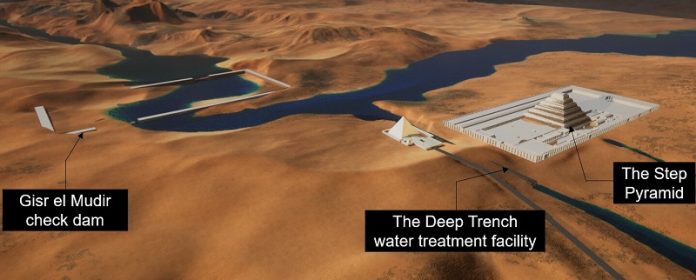
A new study suggests that the ancient Egyptians might have used a unique hydraulic lift system to help build the Pyramid of Djoser, one of the oldest and most iconic pyramids in Egypt.
The research, published in PLOS ONE by Xavier Landreau and his team from the CEA Paleotechnic Institute in France, proposes that water could have played a key role in the construction of this ancient wonder.
The Pyramid of Djoser, also known as the Step Pyramid, was built around 2680 BCE as a funerary complex for the Pharaoh Djoser of the Third Dynasty.
However, the exact methods used to construct this massive structure have long been a mystery.
According to the study, the nearby Gisr el-Mudir enclosure—an ancient structure whose purpose was previously unclear—might have served as a “check dam” to collect water and sediment.
Additionally, a series of compartments outside the pyramid may have been used to treat the water, allowing sediment to settle as the water flowed through each section.
The researchers suggest that this water could have been channeled into shafts within the pyramid.
As the water levels rose, it might have lifted floats carrying the heavy building stones, making it easier to raise them to higher levels of the pyramid.
While more research is needed to understand how water would have moved through these shafts and how much water was available at the time, this study offers a new perspective on how the ancient Egyptians might have harnessed hydraulic power.
The authors also believe that this hydraulic lift system could have worked alongside other construction methods, such as ramps, to help build the pyramid.
This discovery opens up a new area of research for scientists, focusing on how water power might have been used in the construction of Egypt’s ancient pyramids. According to the researchers, this collaborative effort has unveiled the possibility that hydraulic technology played a significant role in building the Step Pyramid of Saqqara, offering fresh insights into the engineering capabilities of the ancient Egyptians.
Source: PLOS One.



